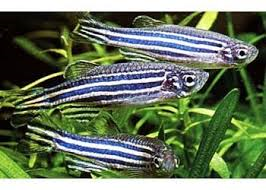Zebrafish: a go-to model for spinal cord regeneration - Blog - Reeve Foundation
Some animals have the capacity for self-repair. Haven’t you always wondered whether one day we’ll figure out the recipe for limb or nerve replacement, perhaps restoring a damaged spinal cord? Far fetched, right? Maybe not. Scientists are unraveling the biology of regeneration in salamanders and fish. They’re finding the genetic codes that turn on the repair system. And they are finding links that may apply to mammals like us.
Take the freshwater zebra danio, a common species found in many home aquariums. These fish have a remarkable ability to self-heal. Cut off a fin, damage the heart, or sever the spinal cord, wait a couple of weeks and the danio has marshaled all the biological ingredients to fix itself. Danios can regrow the fin, restore the heart, or bridge the gap in the spinal cord, for a complete recovery.
It is quite an amazing process. The reason it’s of interest to humans is that danios and mammals share 70 percent of their genetic blueprints; the fish don’t have legs or lungs, but they have eyes, a heart, and a central nervous system. So how come they can regrow a body part, or repair the heart or spinal cord, and we can’t? Good question. Quite a number of scientists are trying to understand why; these little danios have become a favorite model to study regeneration.
Danios are not going to replace mice as the go-to animal model for most of the life sciences, but they do have advantages. They are cheap, easy to keep, they grow quickly, have a relatively small genome, are amenable to genetic mutation, and they make their repairs pretty fast.
A research paper came out late last year that offers a major clue about danio self-repair, and what’s cool about the discovery and makes it relevant to people, is that a molecular stimulant that sets off regeneration in the zebrafish spinal cord is also present in humans.
 A group from Duke University Medical Center, led by Kenneth Poss and postdoctoral fellow Mayssa Mokalled, along with colleagues from Max Planck Institute for Heart and Lung Research (in Germany), identified a growth factor, connective tissue growth factor a (CTGFa), that activates successful spinal cord regeneration.
A group from Duke University Medical Center, led by Kenneth Poss and postdoctoral fellow Mayssa Mokalled, along with colleagues from Max Planck Institute for Heart and Lung Research (in Germany), identified a growth factor, connective tissue growth factor a (CTGFa), that activates successful spinal cord regeneration.
From the abstract
Unlike mammals, zebrafish efficiently regenerate functional nervous system tissue after major spinal cord injury. Whereas glial scarring presents a roadblock for mammalian spinal cord repair, glial cells in zebrafish form a bridge across severed spinal cord tissue and facilitate regeneration. We performed a genome-wide profiling screen for secreted factors that are up-regulated during zebrafish spinal cord regeneration. We found that connective tissue growth factor a is induced in and around glial cells that participate in initial bridging events.
The Duke team reported that applying human CTGF near the injured site in a danio accelerated the regenerative process.
OK, you may thinking, let’s use CTGF in a human study, let’s turn on the process. It’s not likely to be so easy;, there are many more factors that have to be switched on, and off. Orchestrating the process will involve more than identifying all the ingredients; sequencing the gene codes is crucial. But the zebrafish findings widen the possibilities for researchers to seriously consider rebooting development programs that worked when our bodies were new.
What they did:
Poss and his group first used a genetic screening process to find the blueprint for spinal cord regeneration in fish with severed spinal cords. They found seven genes with potential involvement in the process. One of these, the gene for CTGF, was turned on in and around the nerve support cells (glia); these cells are necessary to build the bridge across the gap in the cord.
They then showed that CTGF is essential to the process: they mutated CTGF to turn it off, thus disrupting the danio’s spinal cord repair process. Then they added extra CTGF: The repair process and functional recovery were even more robust -- both when the growth factor was genetically overexpressed, or when a human CTGF protein -- nearly 90 percent similar to that of the zebrafish form was squirted into the cord near the injury site.
“The fish go from paralyzed to swimming in the tank. The effect of the protein is striking,” said postdoc Mokalled.
From a Duke press release:
Poss said that unfortunately, CTGF is probably not sufficient on its own for people to regenerate their own spinal cords. Healing is more complex in mammals, in part because scar tissue forms around the injury. Poss’s group expects studies of CTGF to move into mammals like mice.
“Mouse experiments could be key,” Mokalled said. “When do they express CTGF, and in what cell types?”
The group also plans to follow up on other proteins secreted after injury that were identified in their initial search, which may provide additional hints into the zebrafish’s secrets of regeneration.
Said Poss, “I don’t think CTGF is the complete answer, but it’s a great thing to have in hand to inform new ways to think about the real challenge of trying to improve regeneration.”
Join Our Movement
What started as an idea has become a national movement. With your support, we can influence policy and inspire lasting change.
Become an Advocate